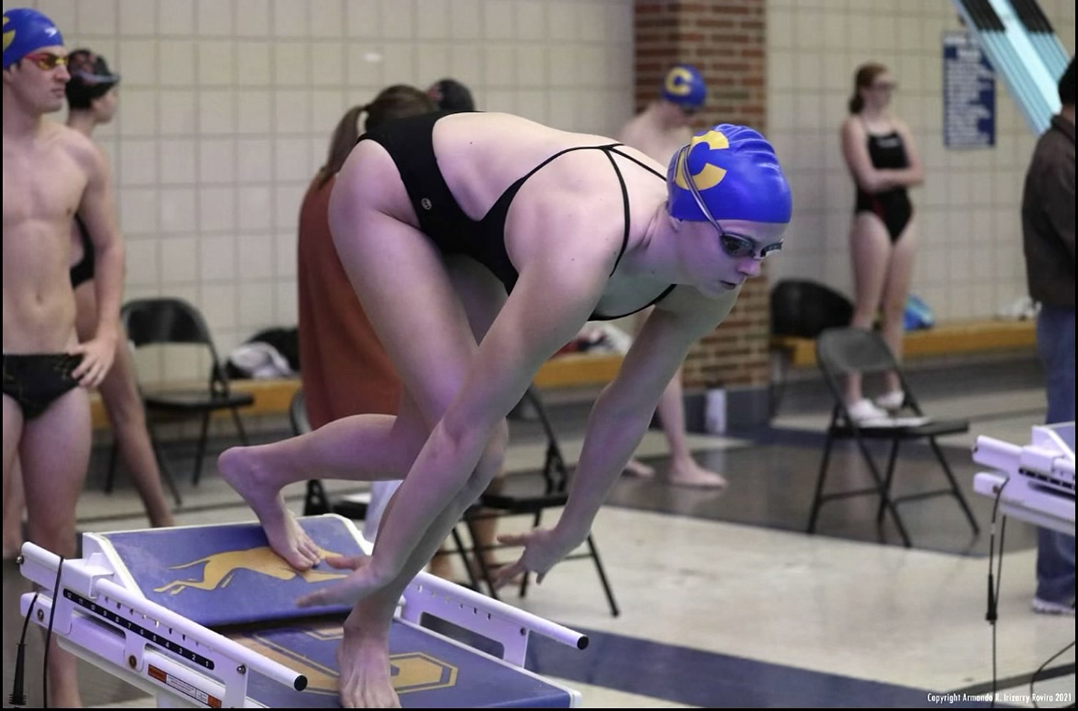When Addyson Czarnecki’s heart started racing, she wasn’t sure what was causing it. It was occasional at first, but then started happening more frequently, and the episodes became more intense.
A freshman distance swimmer for the Carmel Swim Club and Carmel High School, Czarnecki saw her results in the pool suffer as well.
“My biggest worry is that it was something that was in my head and that I was causing it by thinking about it, and that it wasn’t able to be fixed or they would not know what was wrong,” she said.
Czarnecki, 15, finally was diagnosed with supraventricular tachycardia, or SVT, an issue with the heart’s electrical system that causes the heart to beat upwards of 300 times per minute. It is the most common rhythm disturbance in children, estimated to occur in as many as 1 in 750. The condition is often misdiagnosed as panic attacks.
“I felt validated after I got the diagnosis,” said Czarnecki, who didn’t think the issue was stress related.
The first heart-racing episode occurred in February 2021. By October, it was happening two times a week, and by November it was happening nearly every day.
“We thought it was her asthma at first,” said her mother, Amy Czarnecki. “She has irritant-induced asthma, and chlorine is a major trigger. We weren’t sure what to make of heart-racing episodes because they were mild at first. Her pulmonary doctor cleared her lungs, and by that time her heart-racing incidents were frequent and bad.”
Czarnecki started getting chest pains and would feel exhausted for days after an episode. She was referred by the pulmonary doctor to Riley Hospital for Children cardiologist Dr. Mark Ayers.
Ayers said it is often challenging to diagnose SVT, and it was Riley nurse practitioner Dana Hartman who pushed the team to move forward
“We normally like to document SVT before we undertake a procedure, but because Addyson is a swimmer, it’s hard to catch because her symptoms were only happening when she was in the water,” Ayers said. “Her symptoms were classic for SVT with the racing heart, so we thought it was worth the low risk of the procedure to cure the SVT so she could get back to her athletics.”
The 5-hour procedure, a cardiac ablation, to correct the heart condition was conducted Dec. 23, 2021.
Ayers said the long-term success rate of the procedure is 95 percent.
Czarnecki, a distance freestyler and breaststroker, swam in two high school meets before the procedure.
“Once they suspected it in November, her doctor said she can still swim if she stops when she has an episode, and if she feels faint, she needs to take a break,” Amy said. “She had a couple bad episodes where her coaches told her to go home.”
She took a week off from swimming a week before and a week after the procedure. Before the procedure, Czarnecki said she researched Olympic swimmers and found there were some who had cardiac ablations. That made her feel more comfortable about recovery.
Czarnecki now wants to raise awareness about SVT to help others.
“Make sure you have a good support system around you and people that love you and have a medical team that is going to listen to your problem,” Czarnecki said.
Czarnecki, who moved to Carmel from Georgia in 2019, will compete in the Speedo Sectionals Championship March 31 to April 3 in Indianapolis. She has already signed up for a 6-mile open swim race in August.





